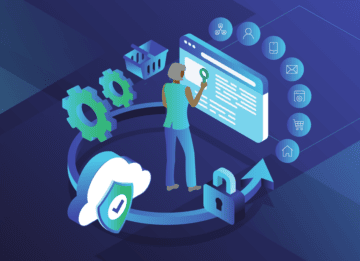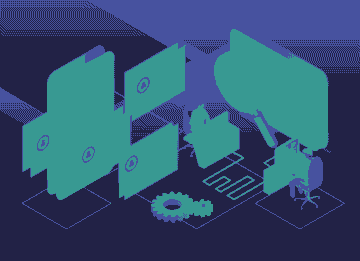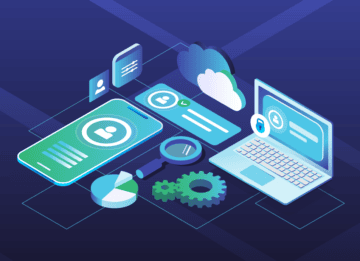Technology Often Makes Life More Complicated. How Can You Simplify Things?
Technology is ubiquitous, and moreso every day. It’s transforming almost everything we do, and the pace of change is only accelerating. But for all that progress, technology is often not as simple and reliable as what it replaced. It should be helping us live better lives and get more done, but instead can be a frustrating mess.
Before the digital age, things were much simpler. Not necessarily better, but simpler. For example, professionals used a simple Rolodex or address book to keep track of the people who mattered most to them. It sounds clunky today. But your trusty address book had everything in one place. It didn’t run out of batteries or require an internet connection. It didn’t break if you dropped it, and it cost less than $10.
The same was true of paper maps. People kept a whole road atlas of maps in their car. They didn’t come with traffic advisories and route finders, and they became outdated over time. But they were accurate and got the job done.
Today, we carry powerful, pocket-sized, voice enabled computers capable of connecting us instantly to all human knowledge and anyone on the planet. A modern smartphone is many times more powerful than the world’s best supercomputers from the Rolodex era. Our phones give us all our contacts on the go, remind us we have a meeting in an hour, and can tell us where to stop for lunch on the way home. But we still have work to do to make technology truly work for us.
Great technology just needs to work!
The best technology products solve a very complex technical problem behind the scenes, but present the solution in a very simple experience that anyone can understand. To do this, you need to get two things right: accurate data and a simple user experience. And you have to get them both right. If your data isn’t reliable, the best product design in the world won’t matter, because people won’t trust your product.
I saw this first hand when I worked on Google Maps. Providing an accurate map of the world, which was constantly changing, was a huge, complex data problem. To solve it, we used satellite imagery and aerial photography, we drove cars around cities, and we had people call millions of businesses just to see if they were still open. Then we hid all of that complexity from our users, giving people a simple map that they could drag around and interact with directly. We eliminated as many of the controls and buttons as we could, and made the map itself the product, simplifying that enormous data complexity into a product a child could easily use.
If Google Maps ever gave directions to a location that wasn’t correct, or to a business that had closed, that would be really painful and people would quickly lose trust in the product. The design had to be great, but if we hadn’t gotten the data right, nobody was going to trust the product.
That’s unfortunately what happened to Apple Maps, which had a beautiful design, but failed to provide accurate and reliable data. Building a precise database of locations around the world is a very difficult problem. But it’s absolutely essential to keep customers happy, or they will go somewhere else.
I also saw this principle in action at Dropbox, where I led development of the company’s collaboration products and features. We obsessed over tons of small, invisible details to ensure our service was rock-solid and seamless across multiple technology platforms, because we knew that whenever anything went wrong, it was really painful. If a customer was trying to write a college essay, but couldn’t connect to her files, or wasn’t in sync with a collaborator, that was unacceptable. Our goal was for our software to just work and then fade into the background, so you could focus on getting your work done, not on figuring out how our service worked. To accomplish this, we would chase down any error we found, no matter how small. When we heard about someone’s grandmother experiencing a problem on a specific version of Windows Millennium Edition in the Swedish language, we’d fix it so it wouldn’t happen to anyone else. When users felt like it just worked and we could get out of their way, that was success for us.
The best way to dazzle your customers is to solve big audacious problems by giving them simple, reliable products. The underlying technology may be complex, but your customer doesn’t need to see it. They just want it to work. A simple, reliable experience with rock-solid data is the standard which all technology should aim to reach.
Matt Holden is VP Product at FullContact and formerly worked at Dropbox, Google, and YCombinator.
Recent Blogs
-
 February 25, 2025 Introducing Email Signals: Unlock Powerful Email Engagement Insights Customer 360, Customer Experience, Marketing & Sales, Enrich API
February 25, 2025 Introducing Email Signals: Unlock Powerful Email Engagement Insights Customer 360, Customer Experience, Marketing & Sales, Enrich API -
 August 28, 2024 The Sales Rep's Guide to Maximizing Productivity with Website Visitor Data Acumen, Media Personalization, Marketing & Sales
August 28, 2024 The Sales Rep's Guide to Maximizing Productivity with Website Visitor Data Acumen, Media Personalization, Marketing & Sales -
 August 6, 2024 Turn Visitors into Leads: How to Install the Acumen Web Tag in 5 Easy Steps Acumen, Website Recognition
August 6, 2024 Turn Visitors into Leads: How to Install the Acumen Web Tag in 5 Easy Steps Acumen, Website Recognition